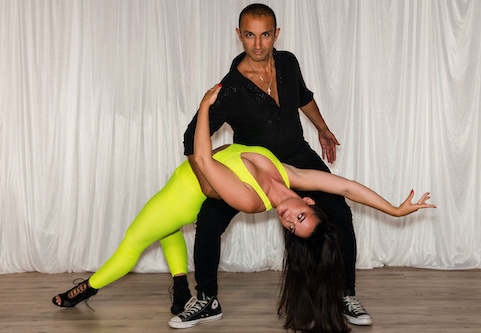All About Dance Fridays
Wiki Article
Not known Facts About Dance Fridays
Table of ContentsDance Fridays - TruthsFacts About Dance Fridays UncoveredDance Fridays - TruthsLittle Known Facts About Dance Fridays.
Let's think of Salsa dancing and songs as a large Tree that looks like this: Salsa is danced globally while numerous technological elements of the dance are the very same throughout styles (6 steps over 8 beats danced on a quick-quick-slow or slow-quick-quick rhythm), there are several "hallmark" features of the primary designs of Salsa that identify one from the various other.Pairs joining a Casino Rueda dance all steps in unison as called by a Leader. Distinct features of Cuban design salsa are circular turn patterns (with "break back" actions on counts 1 and 5) along with body language influenced by typical Afro-Cuban folkloric dances. Distinguishing features of Cali style salsa fasts and intricate footwork, danced with a strong hand hold connection between partners.
The beginnings of the style are a subject of argument, yet it is said that New york city style Salsa dancing came from in the 1960's because of the increase of Latin American emigrants after the Cuban Revolution. Eddie Torres is the most well recognized New York style dancer, being practically universally credited with popularizing the design to dance centres beyond New York.
The standard rhythm of "On-2" is slow-quick-quick. The "youngest" of the styles of Salsa, L.A. Style (some individuals have called it "West Shore" design) came to be preferred in the 1990's and has its origins in ballroom (Mambo, Swing and Cha, Cha, Cha). Transform patterns lead and adhere to strategies are heavily influenced by these designs, with the Cross Body Lead being the foundation of the design.
How Dance Fridays can Save You Time, Stress, and Money.
Style are implementation of turn patterns and figures in the "slot", with the break actions on matters "1" and "5". While Salsa songs has solid beginnings in Cuban, Colombian and Puerto-Rican folkoric practices, it can not be discounted that all Afro-Latin and Latin American societies have actually contributed to contemporary Salsa songs as we know it today.It's feasible that because of political reasons the contribution of Afro-Cuban culture and heritage to modern Salsa in the 1960's and 70's is not commonly identified, yet it can not be disregarded the massive contribution and influence of the "Queen of Salsa", Celia Cruz. A family name in Cuba and the Central Americas as a vocalist in the 1950's, Celia left Cuba for the U.S

Today Salsa songs is produced, carried out and celebrated global. In 2000 the influence of Latin American music and society (not just Salsa) was identified by the National Academy of Recording Arts and Sciences in the United State and the Latin Grammy Awards were created. The Latin Grammy's have accentuated the Salsa Legends and modern Salsa musicians alike
Getting The Dance Fridays To Work
differentiating characteristics of Salsa songs are: 4/4 time trademark, Boy Clave and Tumbao rhythms, Montuno Piano Unless you have a background in songs, the above 3 characteristics most likely imply absolutely nothing to you. A simpler means to describe Salsa songs is how it does NOT seem like various other types of Latin American preferred music.Bachata is a straight 4 beat dancing with a frequency of a syncopated guitara line and a clear lack of any "hard" piano, brass (trumpet, trombone) lines. Cha, Cha, Cha looks like Salsa songs one of the most as it seems like "really slow" salsa/mambo. salsa club san francisco. Cha, Cha, Cha can be differentiated by it's focus of the dual tumbao beat on matters 4 +5 and 8 +1 (the "cha-cha-cha") You have actually been to a Salsa evening at a club and you're hooked you like the music, the energy, the look of two professional dancers gliding across the dancing flooring executing amazing rotates and transform patterns
The majority of brand brand-new professional dancers pick to find out L.A. "On-1" design slotted Salsa styles are the most common in North America (with some exemptions of some city centres that still mostly welcome Cuban and Puerto Rican styles) and L.A
Dance Fridays for Dummies
L.A. Style will design teach promptly educate fundamentals of Basics timing, weight transfer and turn pattern transform. Several dancers, when they've had a year or two of dancing L.A. Style Salsa under their belts, "button" to New York style in order to expand their dancing vocabulary; yet several professional dancers determine to stick to simply one style of Salsa and enjoy their time on the dancing floor in that particular style.Design and New York Style all being danced in the very same club, with much of the dancers being able to switch from one design to the other from one tune to the next. Despite which style you select it is necessary to stick to that style until you're really comfortable with the principles of timing, body rhythm and foundation step execution before considering "changing" designs (if you intend to).

Report this wiki page